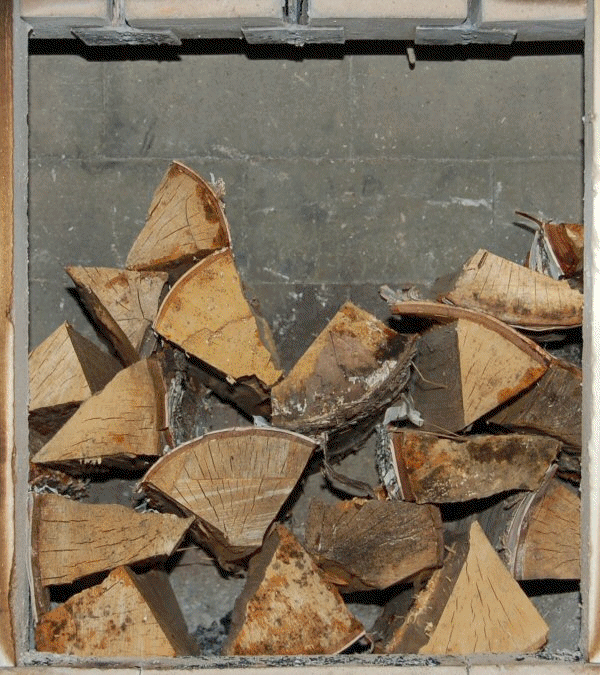

Test HK-K33
February 22/09
Warm heater. Previous fire 13 hrs.
White Birch, 20% moisture
"Austrian style fuel". Small pieces. 18 pieces. 3.9 lbs kindling. 60.4 lbs total. Pieces larger than yesterday: 3.2 lb vs. 2.1 lbs
Stacked front to back. Ignition from top
Very staged burn. Clean start. Overamping starting at 35 minutes.
Moderate CO. Low PM. Compare with run HK-K32
Data for calculation stopped at 70 minutes, when air control was closed.
Flue damper left open 0.5".

Animation, 2 minute intervals.

Flue gas.
Note that time values are offset by 8 minutes. Single CO peak at 55 minutes was off the scale (80,000 ppm), and
ignored as an anomaly, since analyzer only dilutes CO to 30,000 ppm.
Value based on 30 sec readings on either side, for calculation purposes.

Opacity
Note that the PM and the CO don't coincide. The PM starts at the beginning and tapers off, with none for the last 15 minutes.
The CO is low at the beginning and starts at 35 minutes and continues to the end.
Firebox design in Europe is trending towards overfire air holes in the firebox sides. It is logical that this would reduce
the CO in a burn like this one.
However, it is questionable whether they would have an equivalent effect on PM, in this particular example.
Note that the PM is already good, and the CO is not bad. In Europe CO is traditionally regulated, so one could
assume that emissions reduction efforts, as reflected in the latest fireboxes, have focused on CO.
Note that for larger North American loads, increasing the size of fuel piece is a strategy that is unique to North
America at the moment. The European calculation system, for example is based on a burn rate that is assumes
traditional, small fuel.
For large loads (30 kg), European calculations specify a larger firebox. They do
not scale the fuel piece size with the fuel load size, so the burn rate is higher.

Condar Spreadsheet Results
Condar Spreadsheet (includes detailed fueling data)

Fuel stack without kindling.

Fuel stack with kindling.

18 pieces fuel. 57.5 lbs total. 3.9 lbs kindling.
This page was updated on
February 22, 2009
This page was created on February 22, 2009